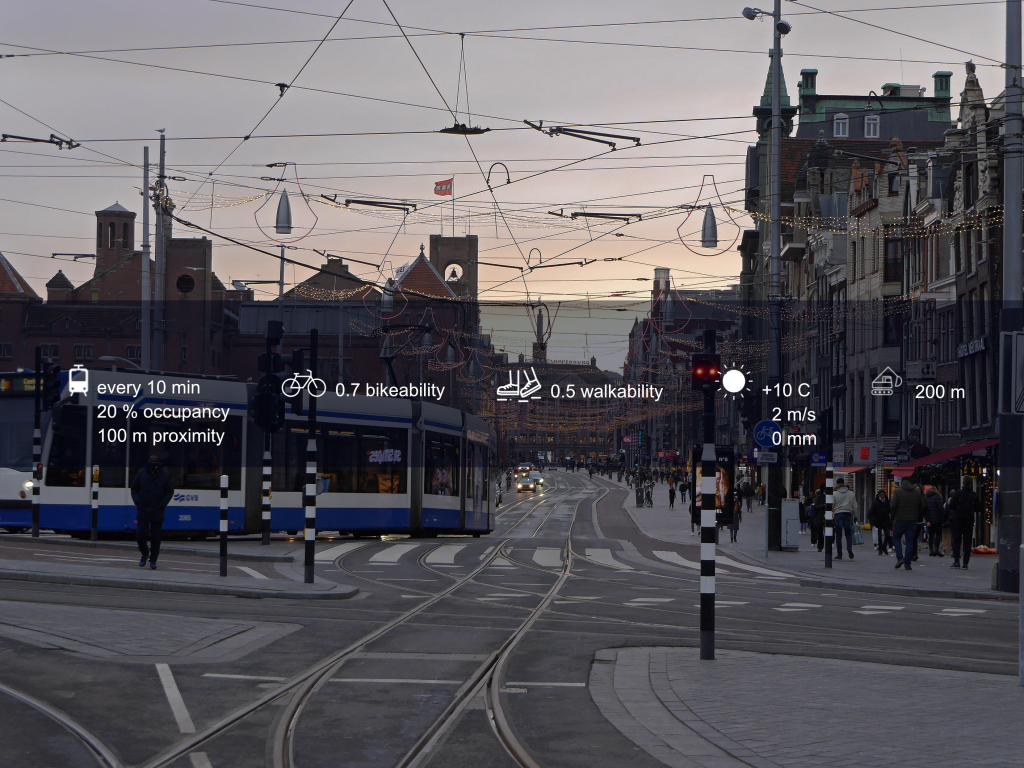Beginning of this year we had a pleasure to present intermediate results of the DyMoN project at the Connected Smart and Sustainable Cities and Communities Conference held in Brussels, Belgium. The conference is an annual event organized by Open & Agile Smart Cities where international member cities and partner organizations meet to exchange experiences and advancements in implementing sustainable strategies and building smart cities.
In the form of a panel discussion Claudia Luger-Bazinger from Salzburg Research and I presented the insights into digital, data-based nudging for sustainable urban mobility from the transdisciplinary project DyMoN. The main motto of the conference was “Collective Action in a Fragmented World”. Reflecting the motto, DyMoN’s project objectives require joined forces of psychology and geoinformatics to improve the design of digital, situation-aware nudging. From our point of view, nudges that assume motivational and opportunistic aspects of a citizen can have a stronger effect in changing mobility to sustainable options.
Nudging is a measure to present desirable options without restricting alternatives with the aim of changing citizens’ behavior. Nudge can be a billboard promoting public transport or a digital notification sent to an individual. In our study, nudges are digital, situation-aware messages that are sent to motivate citizens in sustainable mobility and assist with their decision-making. Situation-awareness is defined by external factors around a citizen’s location in time that identify the most reasonable sustainable mode of transport. In other words, situational context of a citizen helps to calculate a nudge that not only desirable from the perspective of a policy maker, but also reasonable in terms of surrounding infrastructure, transport opportunities, weather, travelling distances, etc.
From the beginning nudging have attracted divided opinions. Many see it as a manipulative and restricting policy instrument, while others suggest transparency of nudging campaigns to overcome the issues with citizens’ loss of control over their autonomy. In our study nudging is designed to be at an individual level having an effect on citizens that knowingly download a mobile application that sends motivational messages. The documentation is transparent and accessible by application users.
Another issue that was raised is the willingness of sharing personal information with the mobile application in case of digital nudging. Moreover, technological restrictions of mobile applications permit tracking of locational information in the background. The DyMoN nudging framework uses a limited amount of personal information, location being the most critical. However, it does not store any personal information by design, hence the framework cannot inform itself to adapt nudging according to the learnt behavior patterns of a user.
The last part of our presentation was on data availability and accessibility. For data acquisition we have developed the data assessment matrix that describes information demand and availability of data that could satisfy the demand. Data have an extensive impact on transferability of the DyMoN framework for it to be adopted by other cities. Thus, we raise awareness on data accessibility, meaning that some data are being collected and available, yet not actually accessible for research or any other purposes.
Overall, we were happy to showcase our developments and be part of this nice event!
Dana Kaziyeva
Example of the situational context of a user that supports mode choice decision-making



Leave A Comment